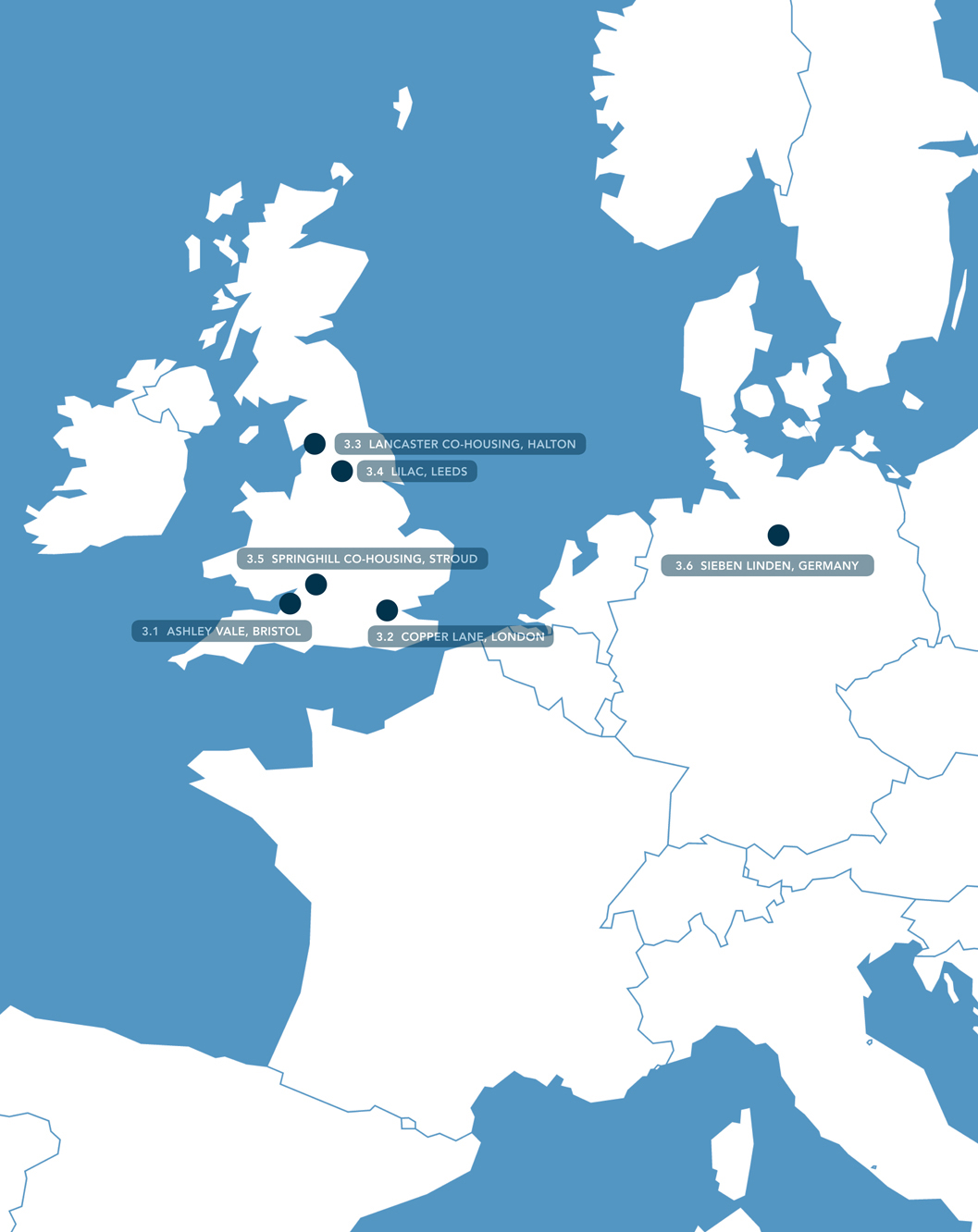Part 3
Co-Housing

Case Studies
We have seen in the previous chapter how it can be possible, with a top-down approach, to achieve good-quality places and housing. But what more can be achieved by building as a community in the way of vernacular builders? These case studies are useful because they offer an alternative to volume housebuilding. This is especially relevant now that the UK government is encouraging councils to provide self- or custom-building sites, and two large such schemes are under way at Trevenson Park in Cornwall and Bicester in Oxfordshire.
Within each case study, there is more information on co-housing elements or the benefits of building as a group, as well as the affordability of building together. It wasn’t easy for these residents to find land, and some ended up with difficult sites of the kind often overlooked by conventional developers. But we need to develope these brownfield sites before looking to greenfield – and by working as new communities, these residents have cleverly overcome many of the issues normally associated with housing developments.
It is well documented that building collectively is fairly commonplace in Germany, and it was therefore important to include a German case study in this chapter. Sieben Linden is much larger scale than UK developments. Its common houses are predominantly straw-bale buildings built by hand, unusual even in Germany.
